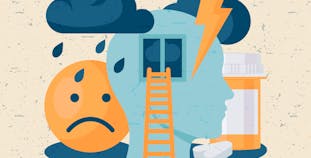Last updated: April 16, 2018
Advance Online

Advance Online
Living with Chronic Pain
There is no perfect way to manage chronic pain. Here's how some people deal with it.

There is no perfect way to manage chronic pain. Here's how some people deal with it.
We use cookies to offer you a better experience and analyze our site traffic. By continuing to use this website, you consent to the use of cookies in accordance with our Privacy Policy.